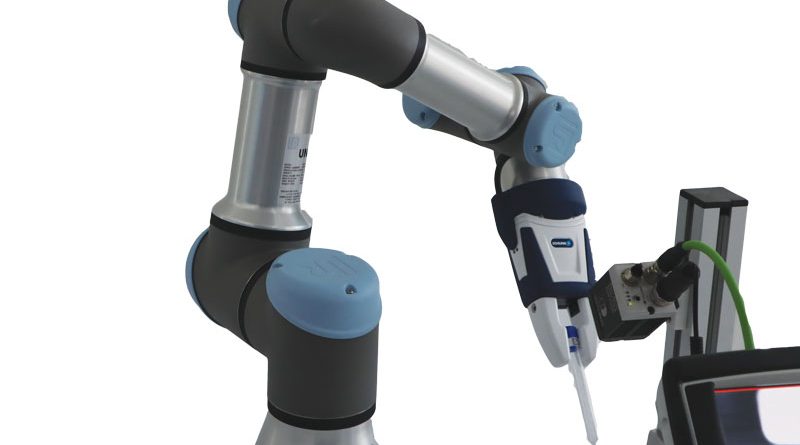A Tool with Unexplored Potential
During an event organized together with SCHUNK and Alumotion, we met Alessio Cocchi, Country Manager of Universal Robots Italy. With him we talked about the market trends in collaborative robotics, about possible applications out of the industrial context and about the adaptability of cobots to the assembly sector, the one our magazine cares about the most.
by Cesare Pizzorno
Universal Robots has always focused on the development of the robotic arm, without investing in other components such as end effectors, vision systems or safety barriers, for instance. How important is to set partnership with specialists in these fields?
Universal Robots primary goal has always been to manufacture the best collaborative robots on the market. For more than 10 years we have been pursuing a continuous technological development on this product, which we have thought from the beginning as being integrable, quickly and easily, with the tools that make it possible to apply it in every industrial sector and in (almost) every production task.
This has allowed us to focus exclusively on the development of the robotic arm and to offer, with our e-Series, the most complete collaborative robotic platform on the market. The partnership with the network of developers and integrators is then strategic, as it allows us to provide companies with a complete solution, without hidden additional costs.
The development of a collaborative robotic application, which includes the robot, the end effectors and any sensors, has a much lower cost than a traditional robotic solution.
In addition, it is flexible and able to adapt to the production needs. Such a technology allows companies for a fast ROI and see their investment last over time.
I would add that the partnership network that binds us to the developers is actually a primary part of the Universal Robots offer: the accessories are sold through the online Universal Robots+ platform and are all certified for use with our cobots.
There are still quite a few applications in which the cobots carry out actual assembly operations, while it is more frequent to see them engaged in tending tasks. What is the cobots potential as for proper assembly?
Although pick&place and tending are the most common collaborative applications, we already have thousands of examples of assembly applications, mainly – but not only – in the automotive industry, where even large players such as PSA and BAJAJ use UR cobots. The specific advantages of UR collaborative robots clearly emerge during assembly: adaptivity with force control, compliance and operational flexibility.
In addition to these specific features, cobots ensure all the advantages typical of robots: precision, repeatability, increased productivity. In addition, they allow for collaboration in the process, a factor that allows companies to pursue several advantages: reduce tooling costs, have more compact and open layouts, have an application that can be moved within the production site and easily reprogrammed as needed. Starting from a new concept: the possibility to share space and tasks.
Many players are making their appearance into an emerging market such as the one of cobots. Is it a positive sign, a proof of growth then, or rather a wake-up call, from your point of view?
From our point of view, this is certainly encouraging. We don’t fear competition because we see it as a confirmation of our vision of a product we pioneered over 10 years ago. In addition, the entry of other players testifies to the strategic nature of the market for collaborative robots, that is to say the automation segment that is supposed to experience the highest growth rates in the coming years. If many players are on the launch pad, we can say that we have already taken off a long time ago. The strategic advantage we have gained is above all technological or due to our ability to read and understand the market. In such a scenario, the partnership network with our distributors and integrators is a key tool and allows us to keep our leadership position.
In your opinion, what is the potential of cobots in non-industrial sectors (healthcare or domestic, for example)? And how much does UR rely on these possible applications?
I believe that the potential of cobots has just been scratched. We are seeing a lot of interest from companies that don’t work in manufacturing and we are already seeing several case studies. In the healthcare sector, of course, but also in food, service robotics, architecture and entertainment. The flexibility of UR cobots, their native safety, the ease and speed of integration allow them to be implemented even in sectors that have traditionally been unrelated to automation. We continue to focus mainly on manufacturing industry as the first area of integration, but by testing our cobots in an industrial environment we realize for ourselves the opportunities they may have even in other sectors.

